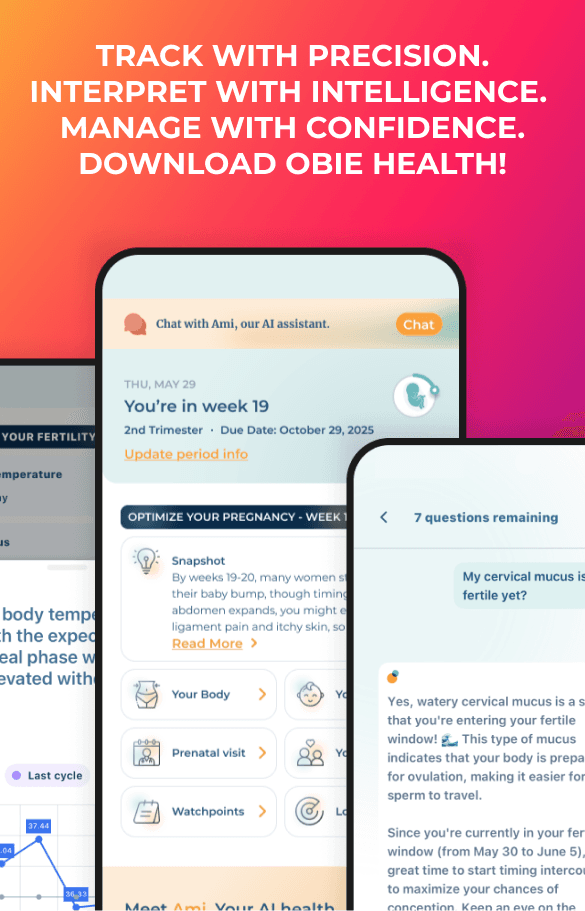Postpartum Healing: What Happens to the Body After Giving Birth?
Obie Editorial Team

After giving birth, your body undergoes an incredible transformation to recover. From uterine involution to hormonal shifts, understanding these changes can help you navigate postpartum healing with confidence. While every woman’s recovery timeline is unique, knowing what to expect can make the process less overwhelming.
What Happens in the First Six Weeks?
- Uterine Involution: The uterus contracts back to its pre-pregnancy size, a process that can cause mild cramping, known as afterpains. This typically takes about six weeks but may be quicker for some women, especially those who breastfeed, as nursing releases oxytocin, which helps the uterus contract more efficiently.
- Lochia Discharge: This normal part of healing is the shedding of the uterine lining. It starts as bright red bleeding, then transitions to pink, brown, and eventually a yellowish-white discharge before stopping completely. Heavy bleeding or large clots should be discussed with a healthcare provider.
- Hormonal Fluctuations: Estrogen and progesterone levels drop significantly after birth, contributing to mood swings, night sweats, and fatigue. Additionally, prolactin levels rise in breastfeeding mothers to support milk production, which may influence emotions and energy levels.
How to Support Your Recovery
- Rest & Hydration: Sleep is crucial for healing, but with a newborn, getting enough rest can be challenging. Try to nap when the baby sleeps and accept help from loved ones. Staying hydrated supports tissue repair and helps regulate hormone fluctuations.
- Nutritious Diet: Eating iron-rich foods (leafy greens, lean meats, legumes) can replenish lost blood, while protein (eggs, fish, poultry) aids tissue healing. Omega-3 fatty acids, found in fish and flaxseeds, may also support postpartum brain health.
- Gentle Movement: While strenuous exercise isn’t recommended immediately postpartum, short walks can improve circulation, reduce swelling, and lower the risk of blood clots.
Pelvic Floor Health: Strengthening pelvic floor muscles with gentle Kegel exercises can help prevent incontinence and support recovery from vaginal delivery.
Understanding these changes can help you feel more prepared and empowered during your postpartum journey. If anything feels off, don’t hesitate to reach out to your healthcare provider.
Source:
Abdollahi, F., et al. (2014). Postpartum maternal health care: A global review of interventions and outcomes. Journal of Maternal and Child Health.









